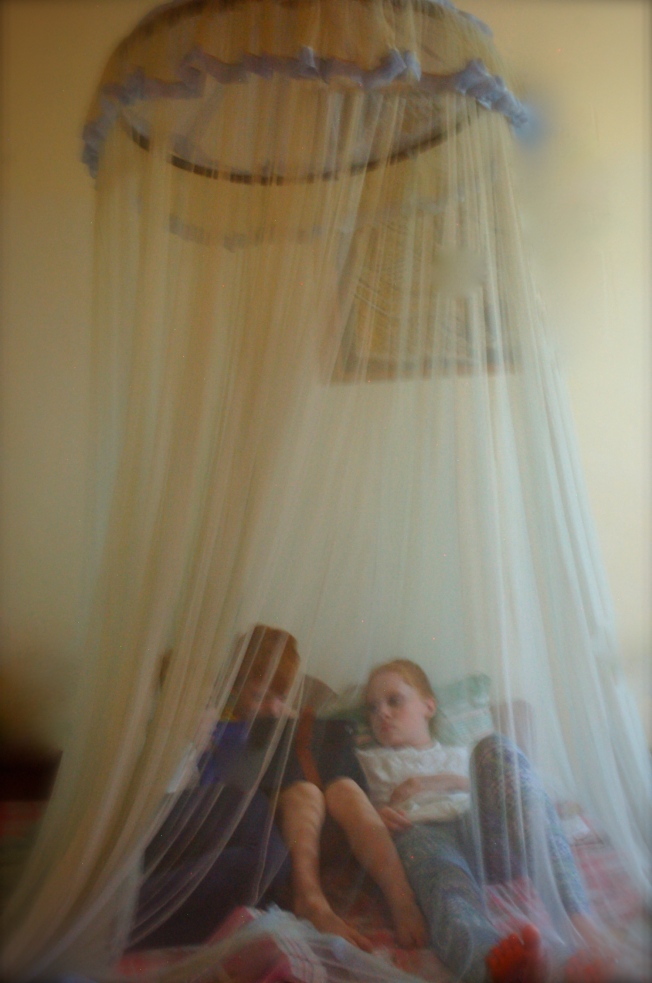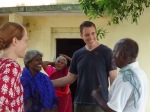
 “What’s in the bag?” I ask.
“What’s in the bag?” I ask.
It’s the first day of the Conversational English Course. I’m dripping in sweat, partly from the sultry weather and partly from nerves. I’ve been asked to teach the faculty at the Peery Matriculation School and find myself way out of my comfort zone.
The first relief is that they’ve showed up at all. The day before, when the head of the school informed me about the new class, required of all faculty, I warned her there could be some pushback, citing contract time, unreasonable mandates, etc. She dismissed such talk with a wave of her hand. “I run an English speaking school, and if our students are expected to master the language, then our teachers must as well,” she explained. “You can begin tomorrow?”
The men are seated on wooden benches on my left wearing slacks and dress shirts. Women are on the far right, wearing vibrant saris or the less formal salwar kameez with coordinating scarves. I see them quietly copying down everything on the chalkboard into their notebooks. I have a class roll in my shirt pocket. I pull it out and review the names. They’re smudged with sweat, but still readable:
Mr. Dhanasekaran, Mr. Raja, Mr. Thaniga, Mr. Velayadum, Mr. Kumar, Mr. Vikram, Mr. Stephen, Mr. Murugan, Mr. Nagaraj
Ms. Saranya, Ms. Eminal, Ms. Lakshmi, Ms. RajaKumari, Ms. Gnanasoundari Nisha, Ms. Keethana, Ms. Leema Rose, Ms. Kala, Ms. Jeevitha, Ms. Lincy, Ms. Nathiya
I tell myself that when I get back to teaching in Utah, I’ll never grouse about tricky names on my class rolls.
My watch shows 4 pm. I clear my throat and start. “What’s in the bag?” I ask, holding up a red canvas bag from Reliant Grocery. “That’s what you’ve got to figure out. Ask as many questions as it takes to guess correctly.”
I look around. “Anyone? Anyone?” Please, don’t let this be one of those Bueller moments. I dash up to the chalkboard. “Here are some words we can use to start off questions: Who, What, Where, When, Why, How, Does, Is, Can, Would. Now who wants to try one out?”
No one does. I glance down at my smudged list. I spot an easy name. “Ms. Kala,” I say, “ask me a question about what’s in the bag.”
She stands up and pauses. Then in a deliberate voice asks, “How is color of the thing in bag?”
“Good! a question about color. What is the color? The colors are white with red stripes.”
I glance at my list. “Mr. Vikram?”
A trim man stands and says, more confidently, “From where you get this?”
I hesitate, deciding whether to validate his never-end-on-a-preposition construction or model conversational English. Forgive me Winston Churchill, but ending with a preposition is one thing up with which I will put. “Where did I get these from?” I ask, reinforcing natural speech patterns. “I bought these from an athletic store.”
I mop away the sweat from my face with my shirt sleeve then look around. “Okay, who’s next? How about you?” I say, pointing to a woman so slight of frame her sari’s six yards of fabric look like they’re still spooled around a flat of cardboard.
She hides her face in her hands but slowly rises. From behind her hands a voice whispers,”How . . . many things . . . is in the bag?”
“Are,” a woman behind her pounces. “You say are. It’s plural.” She says it plooorul, rolling her “r.”
“It’s okay,” I say. I give the shy woman a smile. “How many things is a great way to start that question. How many things are in the bag? Two things. But these two things go together. They form a pair. You need both.” I turn to the class. “So, inside the bag I have a pair of . . . “
“Specs?” someone pipes from the men’s section.
It takes me a second to process the British term. “Nope. Not specs, I didn’t bring a pair of glasses. Remember, these came from an athletic store. A store that sells sports equipment and athletic clothes. And remember they’re white with red stripes. And they’re always used as a pair.”
Nagaraj is the one to guess shoes. He’s an administrative assistant to the principal and I will come to learn that he speaks 7 languages. One of his feet was crushed and eventually amputated after a gory motorcycle crash. He now wears a prosthetic. Shoes aren’t always used as a pair.
I make them do a silly drum roll on their desks while I pull the mysterious object from the red bag. Yes, I mock-gush, it’s a pair of shoes. Running shoes. I move up and down the room for them to see.
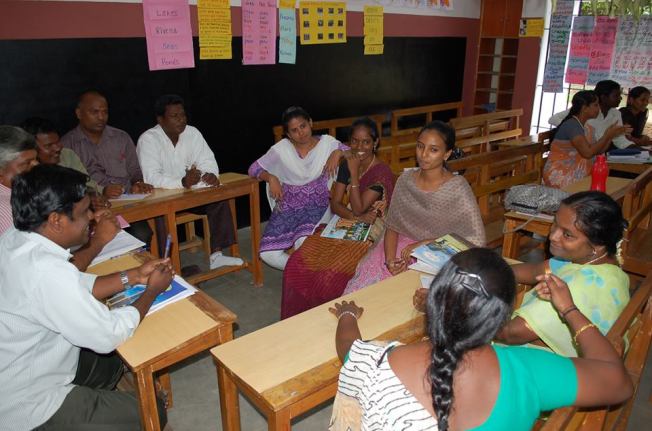
After a couple weeks, we tried mixed grouping [gasp] for a learning activity. Cooties were flying over all over the room, but I think they had fun.
It turns out that not a single teacher owns a pair of running shoes, and the concept of recreational running strikes them as rather bizarre–an attitude shared by most of my American friends, come to think of it. Undaunted, I proceed with the Listening Comprehension section of my lesson by talking to them about training for my first marathon. We have a discussion about practice and endurance. I tell them I’m confident that if they persevere and push themselves, day after day, they’ll find their English skills growing stronger and stronger.
Two weeks later.
“What’s in the bag?” I ask.
Over the last couple of weeks I’ve pulled out of the bag a Tibetan singing bowl, a toothbrush, a Native American flute, a blister pack of Mefloquine (anti-malarial medicine), a pound of uncooked basmati rice, and a stainless steel tea cup. And every day the mystery leads us to a story and the story leads us to a lesson. Actually, the story IS the lesson.
Today, I’ve brought a snake. A life-size, weighted, coiled, realistically painted, rubber snake. Cohen brought it along to India with him because we allowed each child to bring one “comfort animal” on the plane with them. And he wanted to bring his snake. Not a problem in LAX, nor at Amsterdam, but when we tried to get through security to board our final leg from Delhi to Chennai you’d have thought the X-ray specialist pausing at Cohen’s backpack had discovered a nuclear detonator. Soon a military guard was interrogating us.
“What is in the bag?” he asked us.
“Um . . . lot’s of stuff. It’s our little boy’s carry on,” Rebecca sputtered. “Is there a problem?”
“You have snack in the bag?” he asked.
“A snack?” she said.
“Snack! Are you bringing snack in this bag?”
I was thinking, Why in the world is he fussing about a snack. We’ve been traveling for over 30 hours, with six more to go. You think we haven’t crammed as many gummy bears and goldfish as we could into that kid’s backpack?
Rebecca tried to smooth things over, but I could hear a tremor in her voice. “If that’s a problem, we can just throw it away. We thought snacks were okay.”
At this point the soldier made a snort. “Okay? Not okay. Snack not okay.” Soup Nazi references would have been ill-timed at this point, I thought. The guard picks up the backpack. “Snack a problem.”
He began unzipping the backpack. I glanced at my watch. We weren’t in a hurry, really. Just keep breathing.
(In) . . . peace . . . (Out) . . . be still . . .
(In) . . . peace . . . (Out) . . . be st—
“–Hah! Snack!”
I looked up. The guard was holding Cohen’s rubber snake high in the air by the tail. Its body dangled in fat, loose spirals.
“This snack a big problem.”
“Oh, snake.” Rebecca says, relieved. “It’s a toy,” she says, “a child’s toy.”
“Not on plane.” He whistles sharply to his comrades-in-arms stationed at different checkpoints. As it turned out, the snack ended up going in the belly of the plane with the checked baggage, and our names were kept off both the Suspected Terrorist Watch List and the Exotic Animal Smuggler List–at least for now.
So this is the snake I’ve brought to class and hidden inside the Reliant Grocery bag. I asked the school social worker earlier in the day if it was sacrilegious in any way to do this. She said no, just nuts. Why would someone even have a toy snake? She shuddered. People get bitten by snakes and die. Very dangerous. She shook her head.
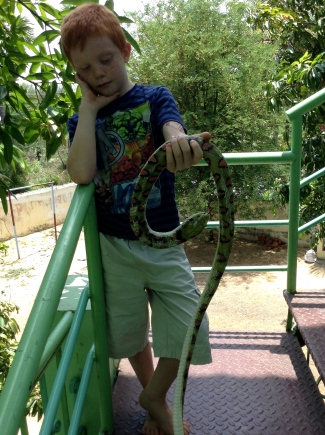
Cohen letting Rattle out for a stretch after too many days cooped up inside.
I brought the snake because I thought it would be fun to share the story of how Cohen was playing near his snake a few days earlier when two grounds workers happened by. One rushed towards Cohen to save the American boy from certain death while the other rushed at similar speed in precisely the opposite direction. After discovering it was just a rubbery facsimile, the intrepid ground worker spent ten playful minutes taunting his co-worker, who refused to be persuaded it wasn’t real. The look of fear in his eyes was as old as his genetic code, a reflex which has ensured his DNA would still be around to have the crap scared out of it.
They’ve been forming questions better and better with each day of practice.
How long is it? Very long.
What shape is it? Coils upon coils.
What sound does it make? Hiss.
I’m seeing them start to squirm.
“What’s in the bag?”
Someone says the word snake–just says the word–and someone screams. Half of the teachers look as if they’ve stumbled into an electric fence. The others are merely anxious, as if they’ve noticed a hornet in the room and hope it keeps its distance.
“It’s okay.” I say. “It’s a toy. Not a real snake. Remember, I said it was made of rubber?”
It doesn’t seem to calm them. There’s fidgeting, restlessness. Someone’s shaking. I consider keeping the snake in the bag. I don’t want to traumatize these people. But then I have a thought: If only I can show them, prove it’s pretend, then they’ll relax.
“See,” I say, “It’s just a silly old rubber toy.” I drag it up out of the bag, fully expecting to dispel any lingering anxiety.
But what ensues is best described as pandemonium. Almost all the women are shrieking; some are scrambling from their desks; one has bee-lined out the door. Most of the men have gasped, bringing up their arms and twisting their bodies away. Someone’s chanting something; another has regained his composure but is fanning himself with a notebook.
It isn’t until I put the snake back in the red bag and physically carry it outside the classroom that they will sit down again. At this point, they resemble first-time roller coaster riders pulling into the unloading dock: post-terror shock, fight or flight juices turning rancid.
I’m ten minutes into a much deserved apology, an explanation, salvaging a lesson out of this, when Ms. Lakshmi finally returns, standing at the door. “Excuse me, sir,” she says, waiting for me to nod her in. She’s still breathless. “I . . . I am easily getting so scared. . .”
“Come on in,” I say. “I’m sorry.” She is so young and so terrified. When she takes her seat I see she’s still trembling.
They feel a little better when I tell them how the strong grounds-keeper ran away and I see them nodding appreciatively when they hear of the vigilance of their country’s soldiers at keeping planes snack-free.
It’s time to for them to catch the passenger van that takes them to the train that takes them to the bus that takes them to a parked bicycle that takes them home. For many of them it’s an ordeal worthy of an Iron Man competition, and today I drained them dry of adrenaline. I bid them a wonderful evening and promise that if anyone’s still willing to come to tomorrow’s lesson I’ll be sure to dial down the terror level to a nice and easy mid-grade apprehension. I don’t think they understand what I mean.
Every day a mystery leads us to a story. And the story is the lesson.
I hope they still want to find out what’s in the bag.
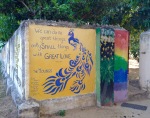
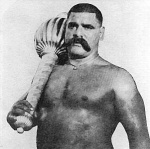



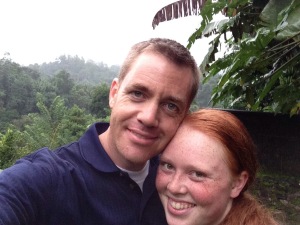


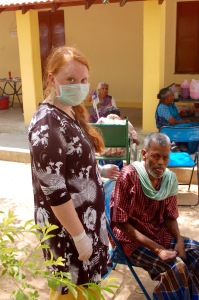
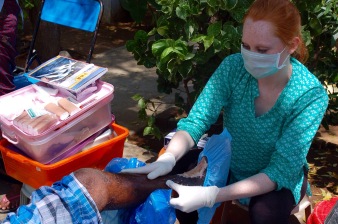









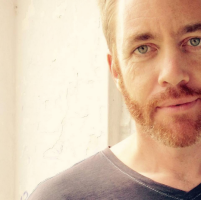
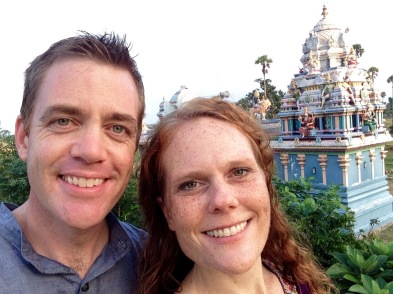
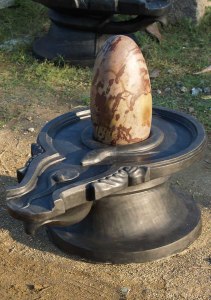
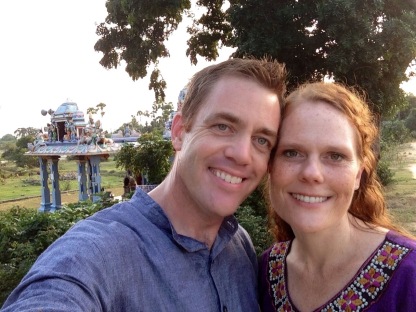
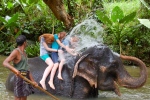
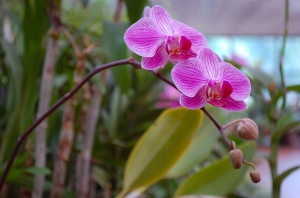
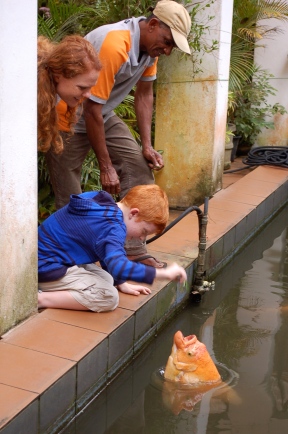
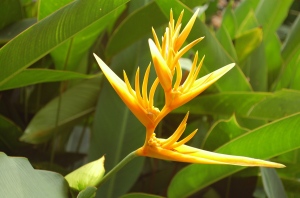
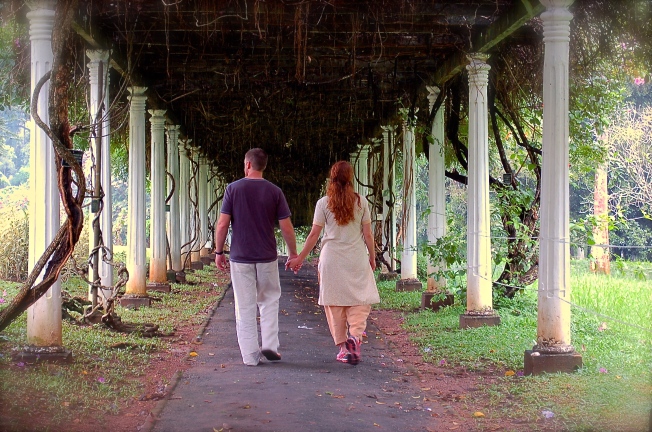
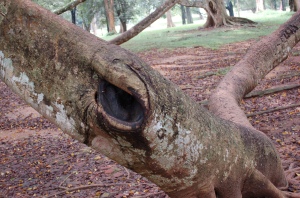
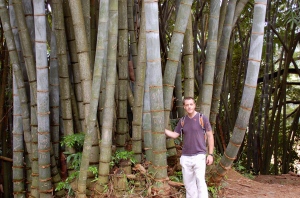
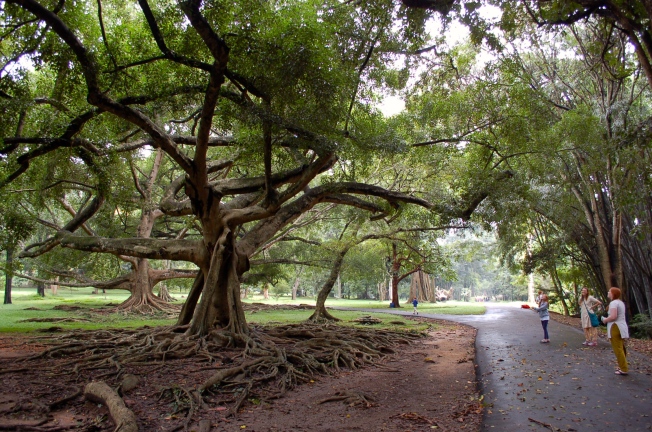
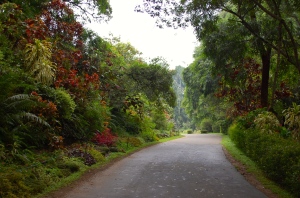
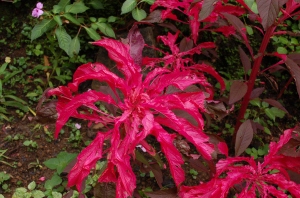
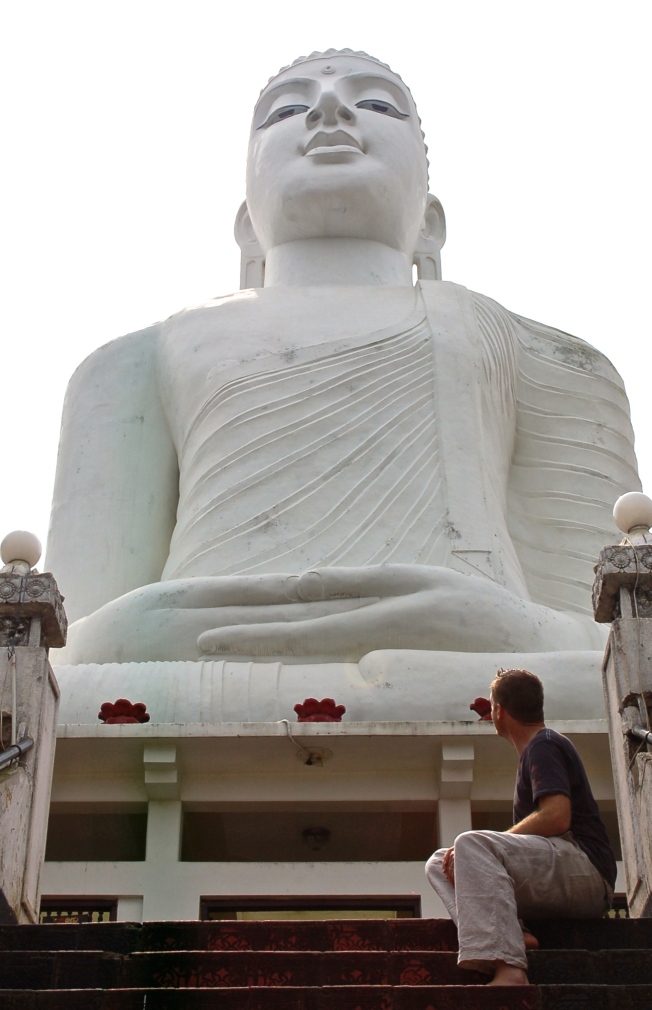
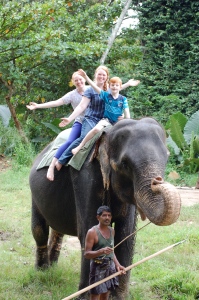
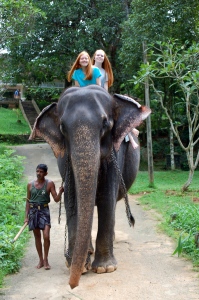
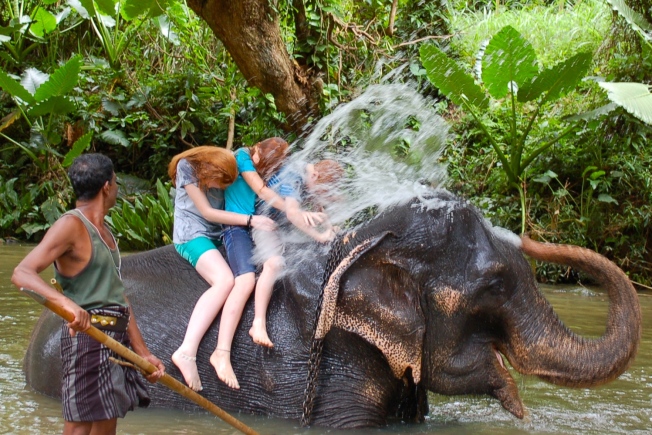
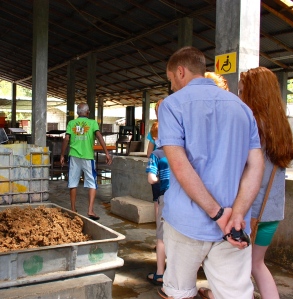



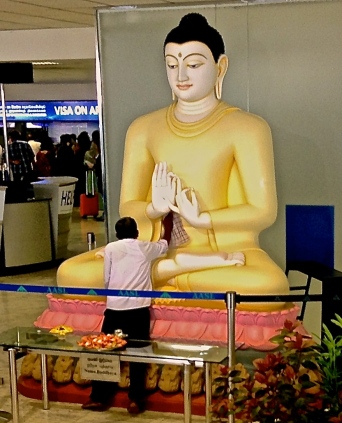
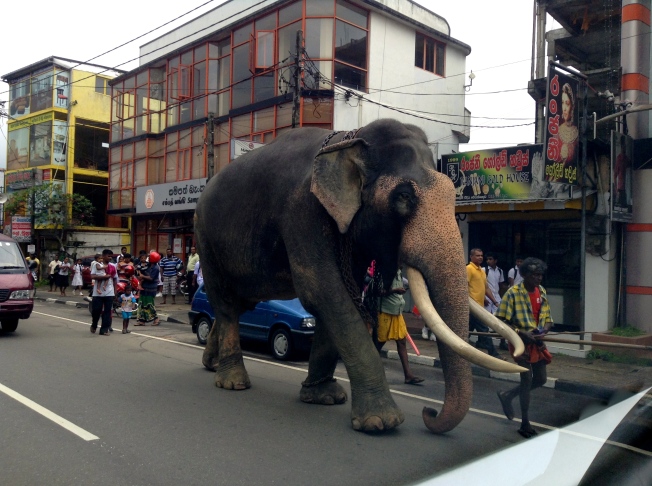
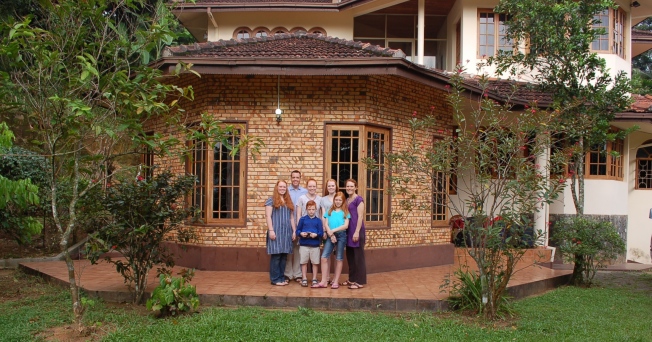 Rebecca and I walk back down the road under an umbrella. We hear chanting, as if from a monastery. It’s somewhere in the hills around us, drifting like camp smoke. I want to find it, find them, my brothers in robes, my sangha. But I’ll have to wait. We’ve got dinner to improvise and suitcases to unpack and drinking water to boil before brushing and a game of murder-in-the-dark before parting the veils of mosquito netting that hang above every bed.
Rebecca and I walk back down the road under an umbrella. We hear chanting, as if from a monastery. It’s somewhere in the hills around us, drifting like camp smoke. I want to find it, find them, my brothers in robes, my sangha. But I’ll have to wait. We’ve got dinner to improvise and suitcases to unpack and drinking water to boil before brushing and a game of murder-in-the-dark before parting the veils of mosquito netting that hang above every bed.